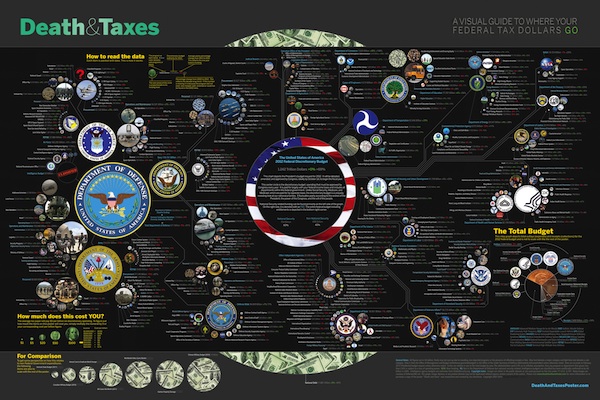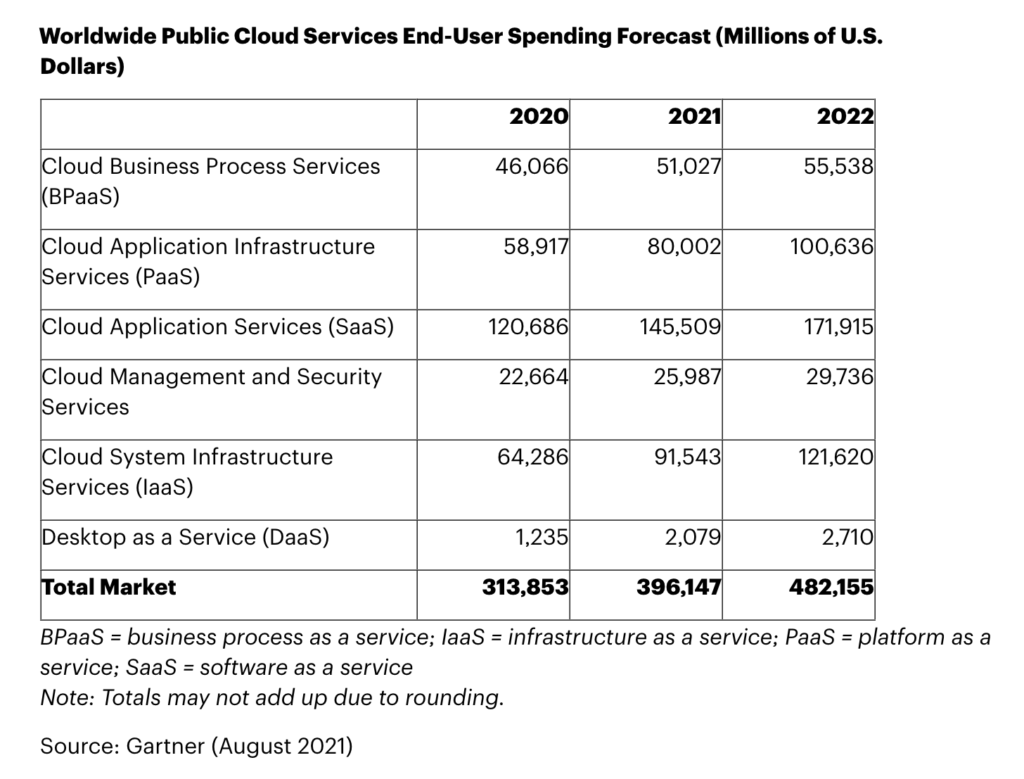If you haven’t already seen Jess Bachman‘s brilliant “1-page book,” Death & Taxes, you’ve got to check this out (click to enlarge):
It’s a superb example of what Edward R. Tufte calls a “supergraphic.” (For more on the art and science behind such supergraphics, grab a copy of Tufte’s latest book, Beautiful Evidence.)
Seth Godin, whose new publishing venture The Domino Project published Death & Taxes, wrote this in a post on the power of visualization: “Data is not useful until it becomes information, and that’s because data is hard for human beings to digest.“
The U.S. budget, in its raw form, is a classic example of undigestible data. Jess Bachman has transformed it into something that anyone can digest as useful information.
“It is not possible to spend less than 10 minutes looking at this, and more probably, you’ll be engaged for much longer. And it’s definitely not possible to walk away from it unchanged. That’s a lot to ask for a single sheet of paper, but that’s the power of visualizing data and turning it into information.”
My takeaway, in the context of U.S. politics, is that it’s a relief to have some actual concrete, digestible information to inspire meaningful discussion and insight, instead of the endless unsubstantiated rhetoric from most politicians and the media that love them. But don’t worry, this isn’t becoming a political rant blog.
Rather, for marketing technologists, this is the bar that should be set for marketing analytics.
While many people are talking about the power of “big data” — a hot topic in marketing, as according to IBM’s latest CMO study, over 71% of CMOs surveyed now feel painfully underprepared to handle the explosion of data under their roof — there probably isn’t enough emphasis on the visualization of data.
Not just visualization for the sake of eliciting “ooo’s” and “ahh’s.” But visualization that genuinely reveals meaningful information, generates useful insights.
Because if there’s a runner-up for a profession that could benefit from more insight, less rhetoric, marketing would certainly qualify. The transformation from (merely) impassioned rhetoric to (also) information-driven insight, is a big part of the core of the new marketing.
In related news, Visual.ly — a new web start-up focused on letting people create amazing infographics — has just raised $2 million in seed funding.




Could not agree more. The fact that data is difficult to digest makes it even easier for some to manipulate it for their own purpose. In my opinion, marketing and politics are both categorized as “smoke and mirrors”; used to persuade people to do things and make decisions they may not have made before.
According to Johannesen, Valde, and Whedbee in Ethics in Human Communication, “whether public communication takes form of messages from government to governed, candidate to voter, media to citizen, or advertiser to consumer, at least a minimal degree of mutual confidence and trust is desirable.” (pg 29)
To have some actual concrete, digestible information to inspire meaningful discussion and insight in both marketing and politics would offer everyone the ability to feel like they are making educated decisions without feeling cynical about the method of delivery or the one whom is delivering.
We have to combat this growing assumption in marketing and politics by exercising caution in and acceptance and care in evaluation. Condemning a message solely due to its origin is detrimental to our political and personal progress.
Carie Benton
Grad Student
Drury University